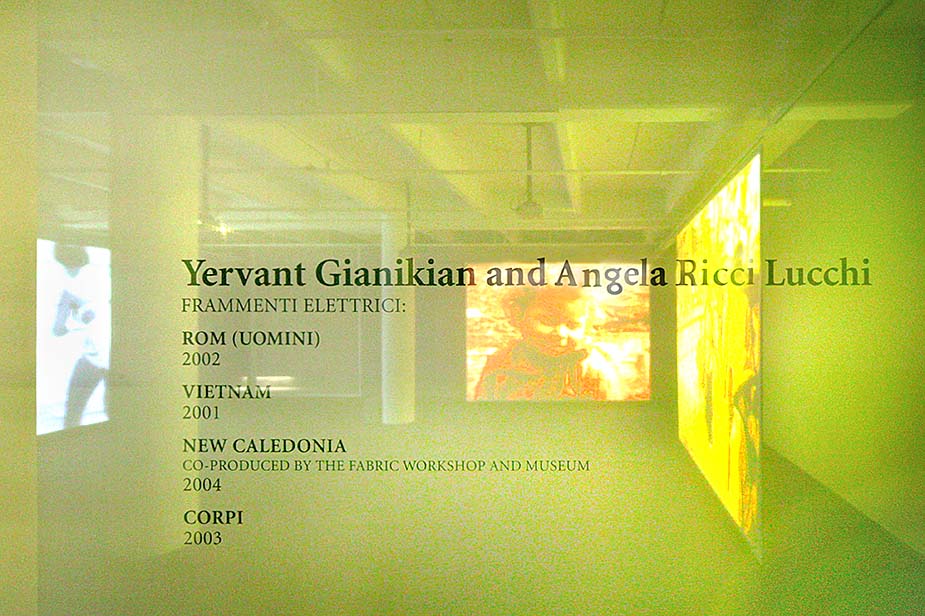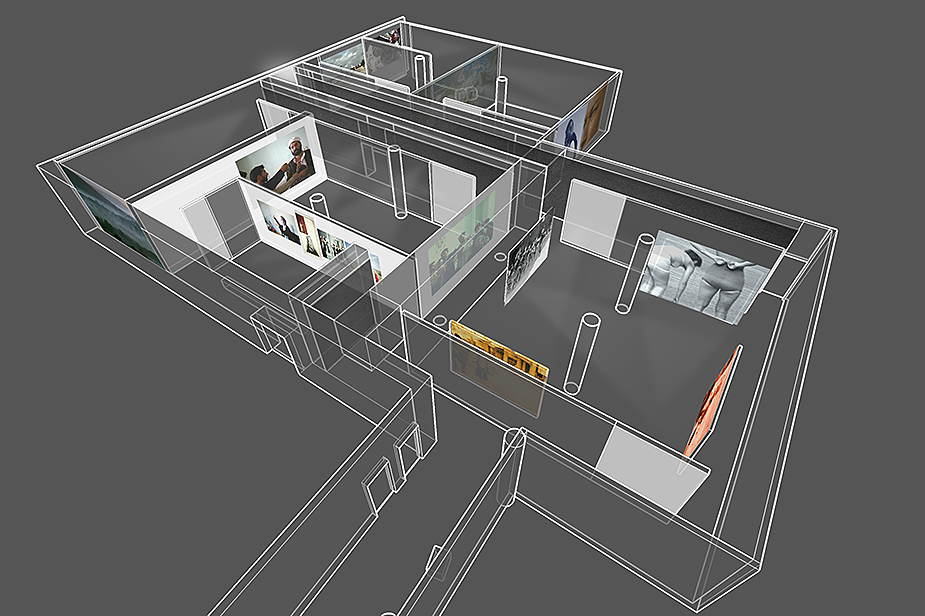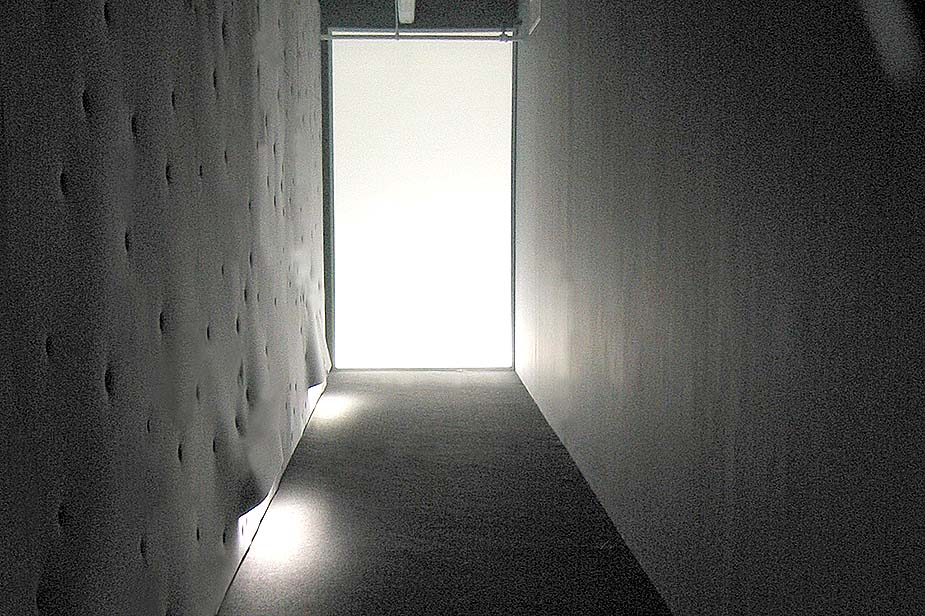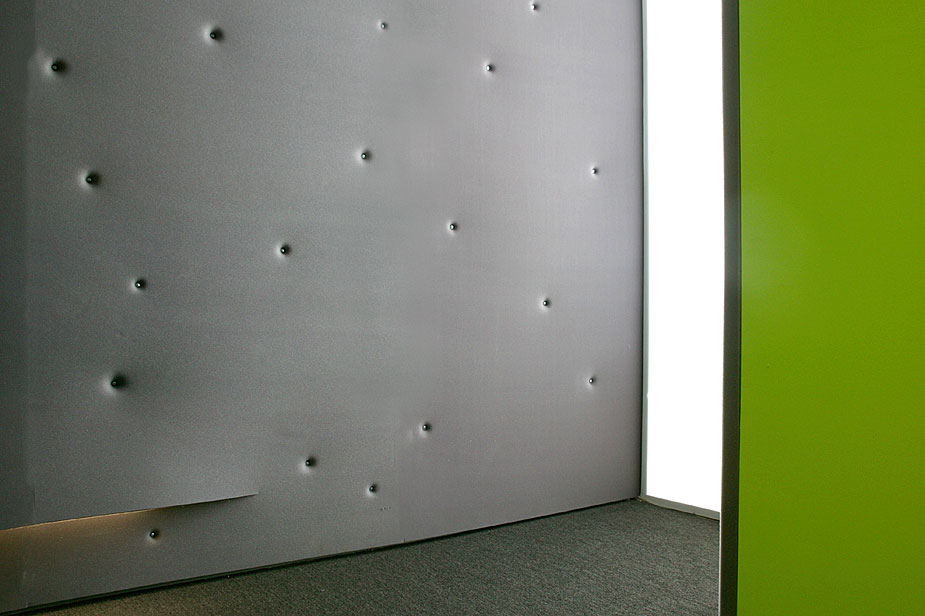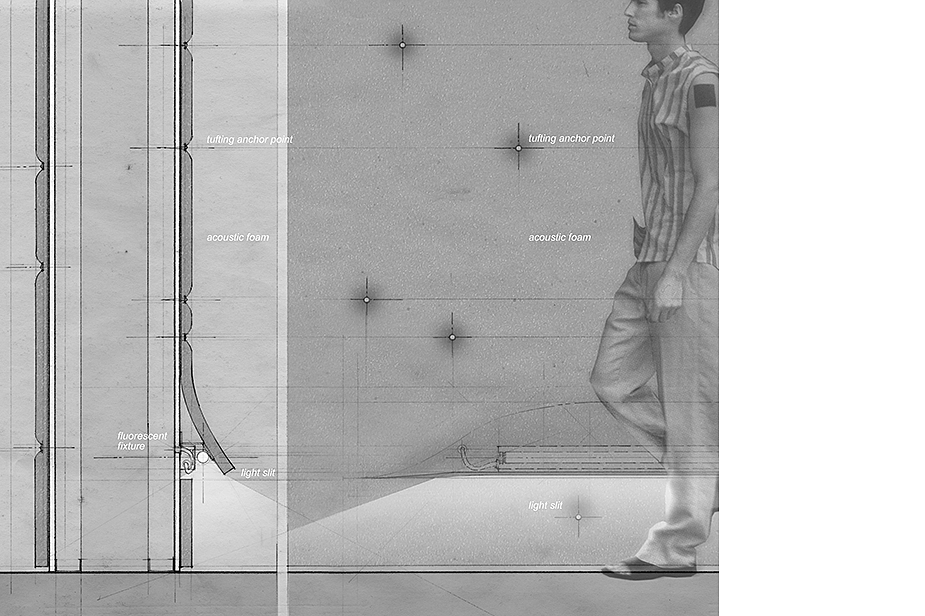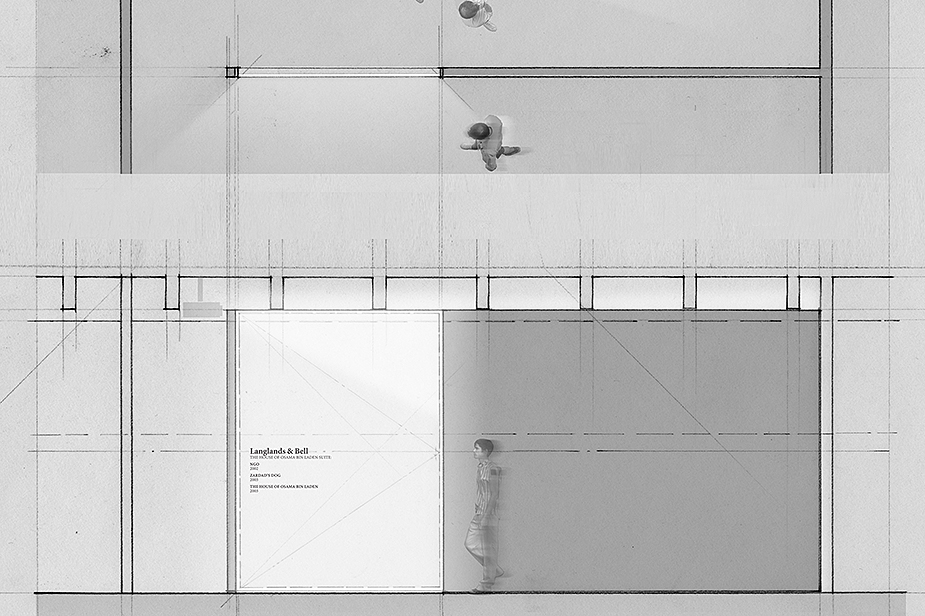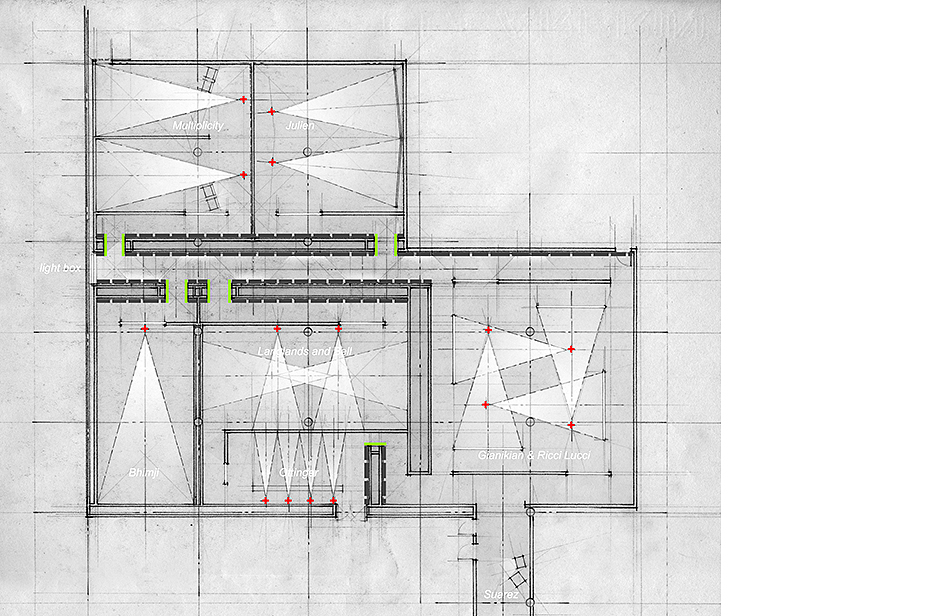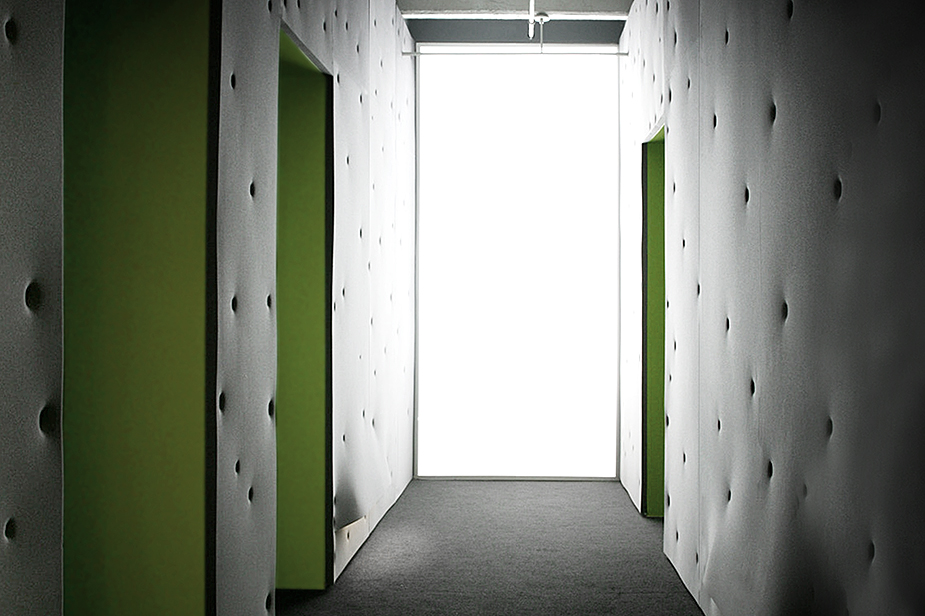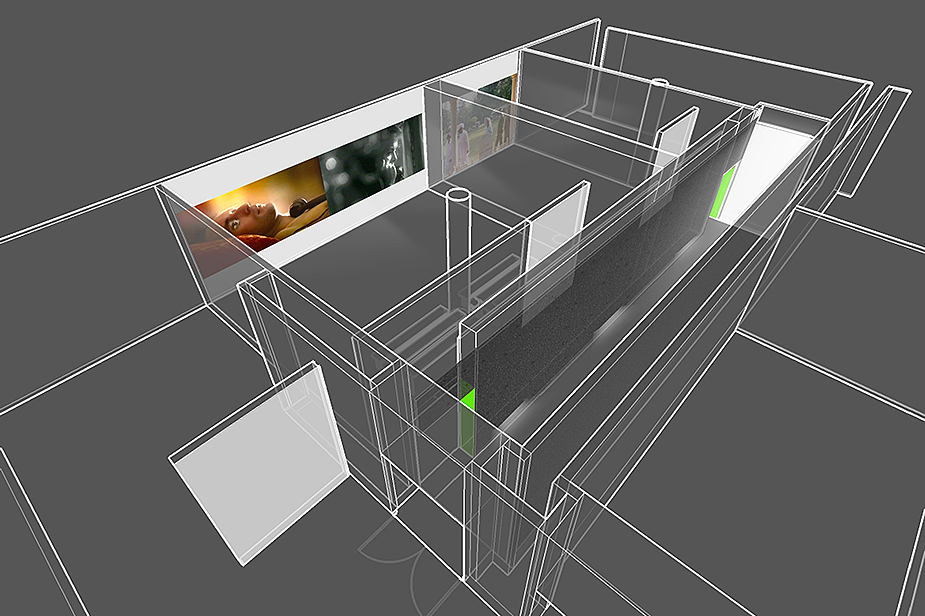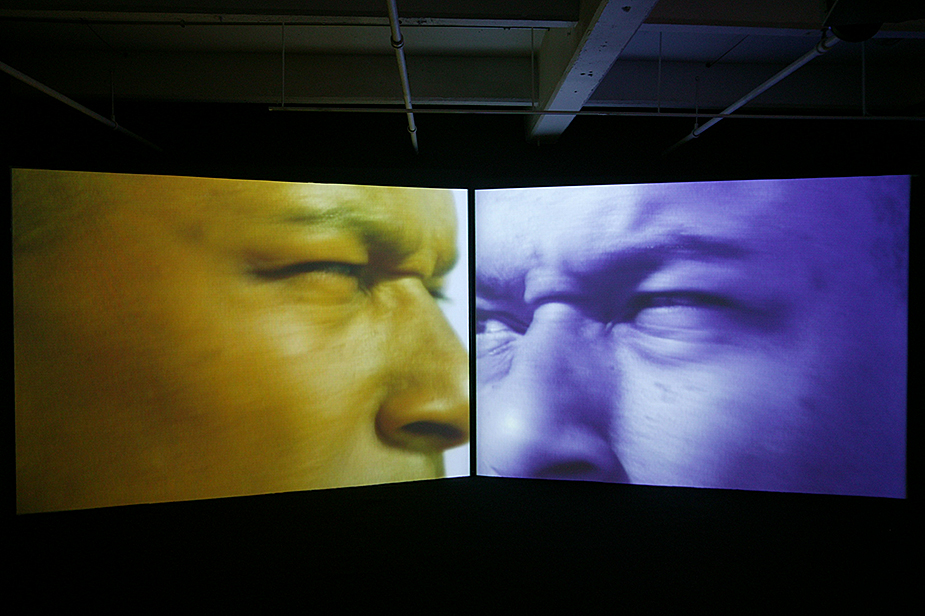EXPERIMENTS WITH TRUTH
The Fabric Workshop and Museum, The Fabric Workshop and Museum, Philadelphia, PA
Invitation 2004Project 2004
Exhibition 2004-05
Invited by architects Diller+Scofidio to lead design work for Experiments with Truth, Lyn Rice collaborated with curator Mark Nash and The Fabric Workshop and Museum to develop exhibition concepts and design for this international survey exploring how modes of representation & viewership have shifted. Creating spaces that constitute a cross between gallery and theater, Rice organized viewing areas around primary and secondary padded foam sound-sink walls to acoustically buffer the works. Slits, cut in the foam, conceal fluorescent lights which leak light onto adjacent circulation paths. Visitors enter each gallery through a passage bound on one side by a translucent scrim wall, screen-printed with artist/artwork titles backlit by the projected images within.
Critic T.J. Demos writes in Art Forum that the "neutralization of the gallery creates ideal conditions for an uninterrupted focus on the singularity of the work, uniformly emphasizing the luminous field of the image over the physical area of display." Critic Roberta Fallon writes of EWT that "(the) architectural transformation...is perhaps the high point of the exhibition. The new design creates a network of viewing chambers branching off dark hallways that...dampen the sound and the dark ambiance creates an elegiac pathway through the somber show about colonialism, war and its aftermath."
EWT takes its name from Mahatma Gandhi's An Autobiography: The Story of My Experiments With Truth and Nash builds on Documenta11 which "explored notions of documentary and artists' moving-image practices, initiating a discussion about a 'documentary turn' in contemporary art." Artists include Bhimji, Gianikian and Ricci Lucchi, Igloolik Isuma Productions, Julien, Kanwar, Langlands & Bell, Ligon, Multiplicity, Ottinger, Portabella, Roberts, Suarez, and Vezzoli.
Lyn Rice/OpenOffice
Principal: Lyn Rice
Design Team: Astrid Lipka, Jonathan Garnett, Anne Schiffman
Curator:
Mark Nash
Media Arts Specialist
Paul Kuranko, Guggenheim
Graphic Design
Conny Purtil
